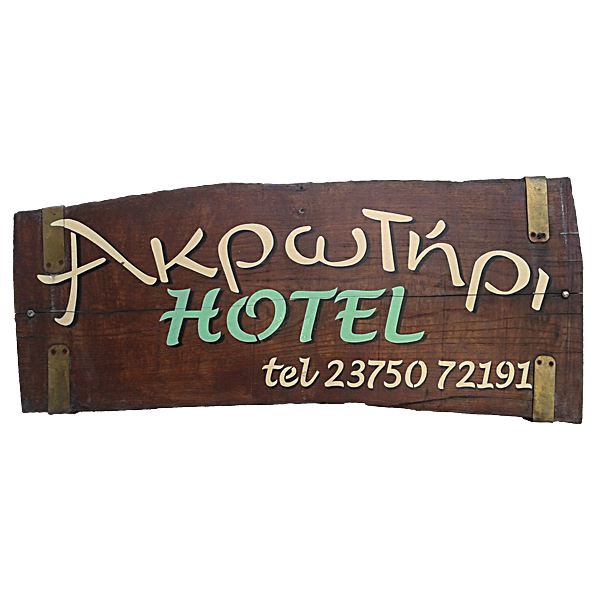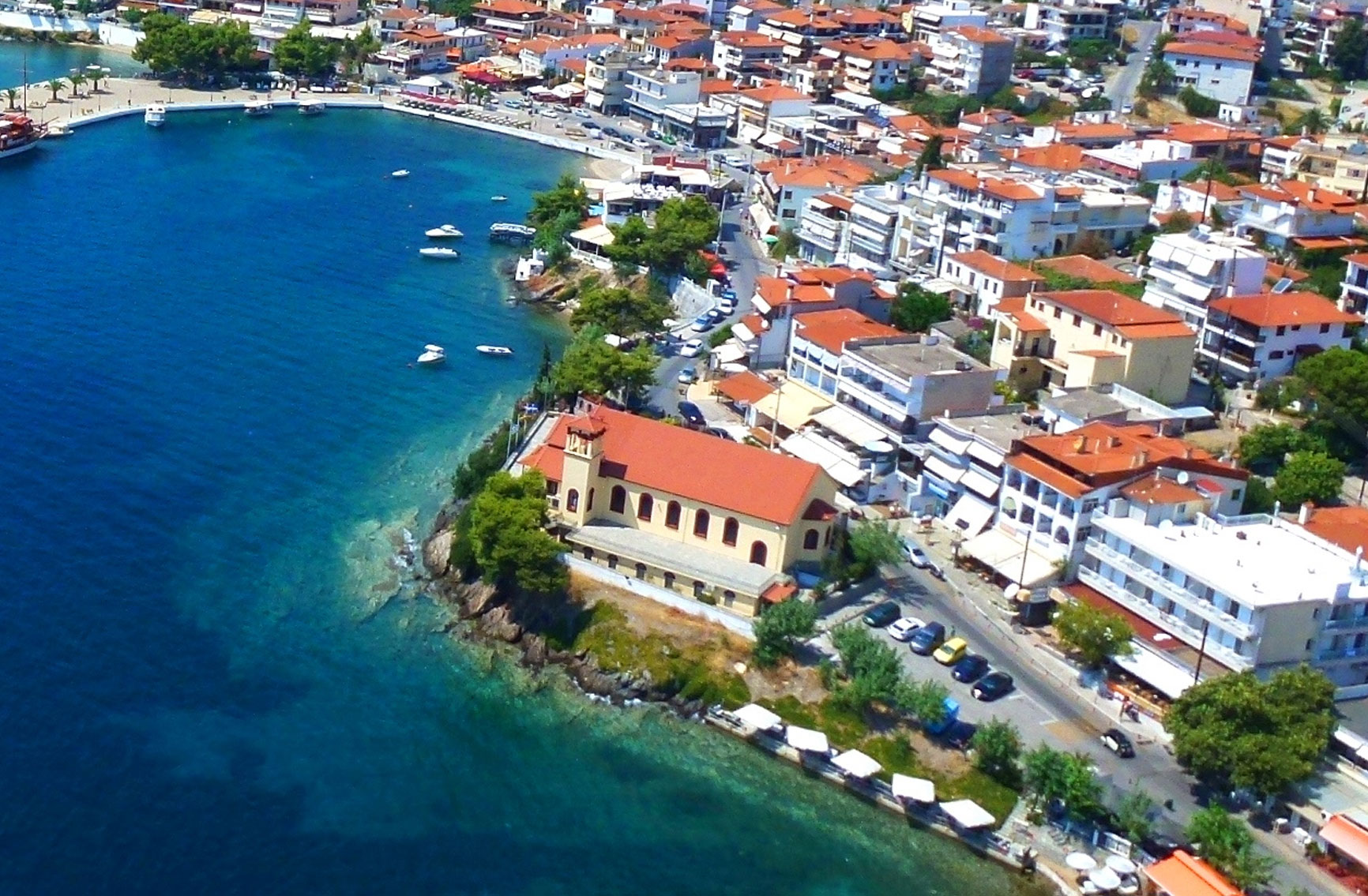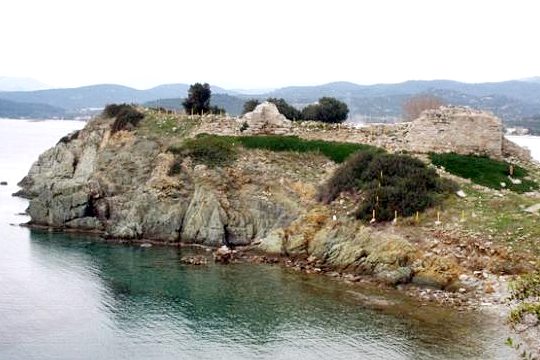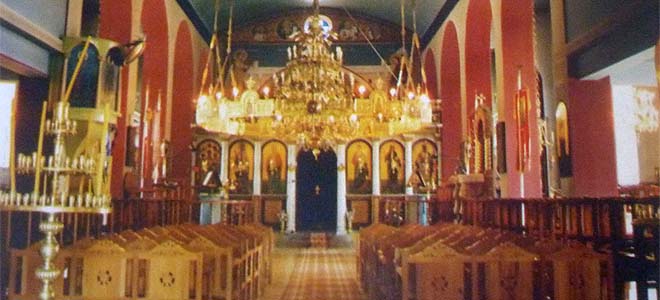Category: blog
Neos Marmaras Nightlife
When the sun goes down, it’s time to party and Neos Marmaras nightlife offers you just that. If you want to experience an unforgettable summer, full of intense nightlife and never-ending fun, this is the right place. Neos Marmaras is one of the summer nightlife destinations you should definitely experience.
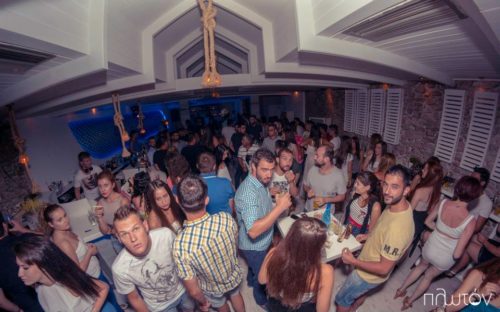
Neos Marmaras is a truly cosmopolitan destination. Located in Sithonia, the second peninsula of Halkidiki that combines both sea and mountain in a unique way. It is situated 125 kilometres (78 miles) from Thessaloniki, this small town welcomes thousands of tourists every year, that visit it for its natural beauty and experience its nightlife. This is why its population during summer time reaches 20.000 people.
This small town on the western coast of Sithonia with the bustling centre shares with its visitors its vibrant life and lively nights full of high-energy, Greek temperament and genuine hospitality. Whether you are looking for a cool and relaxing beach bar to enjoy the sunset over a refreshing cocktail or you’re seeking rollicking nightlife, Neos Marmaras is the ideal haven for you.
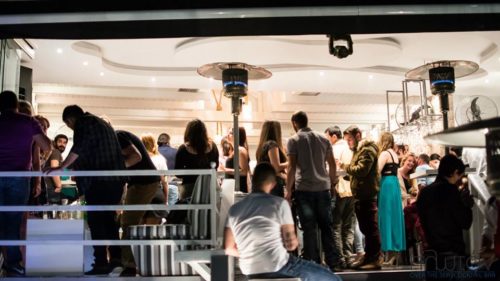
Neos Marmaras offers a wide variety of clubs, beach bars and cafes. At night, the city takes part in an endless party no one should miss. So, if you are looking for a location that will keep you energized, the spirit’s alive and well in Neos Marmaras. It’s an enticing invitation no one can resist.. After all, the holidays is one of life’s greatest pleasures.
With info from visitsithonia.com
A tour of the castles, temples and chapels in Sithonia
Our Sithonia is rich; not only in beaches with crystal clear water but also castles, churches, temples and chapels, all rich in history. So join us for a brief sightseeing tour.
 Church of the Archangels, Neos Marmaras
Church of the Archangels, Neos Marmaras
The main church of the village with many heirlooms from the lost homeland. The church also hosts a unique, intact epitaph.
 The Chapel of Prophet Elias
The Chapel of Prophet Elias
The chapel of Prophet Elias is only a few minutes by car or a short walk up the hill above Neos Marmaras. With pine trees surrounding it, this place offers stunning panoramic views of the valley and the sea. The sunset is an unforgettable experience!
It is open all day.
 The monastery of Saint Gregory
The monastery of Saint Gregory
Although no one inhabits the place today, visitors can wander around its premises.
 The Castle of Toroni
The Castle of Toroni
Ruins of medieval fortification at Cape Lycithus, located on the southern end of Toroni beach in Halkidiki.
Archaeologists unearthed traces of habitation from the Early Bronze Age (3rd millennium BC) and the remains of early Iron Age houses (11th – 8th centuries BC). In antiquity, there was one of the two citadels of Toroni with a strong wall. Thucydides mentions details of the Spartans’ fortification in Lycithus and mentions a temple of Athena that they built there.
The Halkidians founded the city in the 8th century BC. It became one of the most important ancient Greek cities of Northern Greece. It was part of the dispute between the Lacedaemonians and the Athenians. Later, throughout the Byzantine period, there was a powerful castle in the peninsula, which they built mostly with material from the ancient acropolis.
Both the settlement that had developed on the peninsula and the castle were destroyed in the 15th or 16th century. The area must have suffered greatly from pirate attacks and was in decline much earlier, while in the 14th century it belonged to Mount Athos.
 The Early Christian Basilica of Saint Athanasius
The Early Christian Basilica of Saint Athanasius
Triple basilica of the 5th century. It is located in the small swamp, next to the highway between Toroni and Porto Koufo.
A fire destroyed the church in the 6th century and the locals built another smaller church in its place.
 The chapel of Saint George
The chapel of Saint George
The chapel of St. George is built on the middle aisle of a three-aisled 5th-century basilica Christian church, which must have been destroyed in the 6th century AD. along with the most important settlement of the time. The settlement appeared during the Hellenistic years (3rd – 2nd century BC) and developed rapidly on the hills north of St. George.
The early Christian basilica on which they built the chapel we see today, according to the findings of the 1971 excavation, was a beautiful church divided into three aisles, with three pairs of marble columns and a marble slab temple. To the south-east of the church was the cemetery of the settlement. Archaeologists found there two large vaulted tombs. Further excavations in 1979 revealed a Roman bath, which they may have used as a baptistery.
 In 1981 the 10th Ephorate of Byzantine Antiquities conducted excavations 60m. north-west of St. Basil’s Basilica where they found the central temple of the settlement. Today it is the most valuable archaeological site of the Municipality of Sithonia and one of the most important in the whole of Halkidiki.
In 1981 the 10th Ephorate of Byzantine Antiquities conducted excavations 60m. north-west of St. Basil’s Basilica where they found the central temple of the settlement. Today it is the most valuable archaeological site of the Municipality of Sithonia and one of the most important in the whole of Halkidiki.
 The Church of Saint Nikitas
The Church of Saint Nikitas
We find the church of St Nikitas in the middle of the village of Nikiti. It was built in the second half of the 19th century, St Nikitas is one of the oldest and most important buildings in the area. The history of the church is intertwined with the historical evolution of the settlement, the passions, the joys and the dramas of the inhabitants.
 The Church of Holy Mary’s Assumption
The Church of Holy Mary’s Assumption
East of Neos Marmaras lies the church of Holy Mary’s Assumption. It is part of the Gregorian Monastery and was built in 1865.

The Early Christian Basilica of Sofronius
The building is dated from the first half of the 5th century AD. The three-storey wood-panelled Early Christian Basilica of Sofronius constitutes a large Early Christian complex. With magnificent mosaics and the rare high-quality multicoloured marble, columns, pillars and shields. Conservationists of the Byzantine Antiquities Authority restored it recently. It is very popular with visitors mainly during the summer season. The name of the complex derives from one of the inscriptions preserved in the church under the name of Bishop Sofronius.
We also recommend a visit to the Metochi of Xiropotamos Monastery in Sarti, as well as the ruins of the ancient temple and the windmills in Sykia.
A Parthenon in Neos Marmaras

The existence of a Parthenon in Neos Marmaras, even only by name, surprises the unsuspected visitor who is visiting Chalkidiki for the very first time.
The traditional settlement of Parthenon has existed since the 9th century B.C., according to reports from ancient Greek historian Herodotus. People referred to it as “Parthenni” and “Parthenion” during the Byzantine era. Some historians place it in Lóggos, but have not determined its exact location. Others argue that the settlers moved it to its current location. Continue reading “A Parthenon in Neos Marmaras”
Why Are Greeks So Hospitable? An Anthropologist’s View
Is there more to a spoon sweet than meets the eye? Anthropologist Sofia Zinovieff examines the hidden layers of meaning in Greek hospitality.

I first lived in Greece in the late 1980s as a student. I’d exchanged chilly Cambridge for the beautiful Peloponnesian town of Nafplio and was carrying out postgraduate research on modern Greek identity and tourism. Like many first-time social anthropologists, I was learning on the job – studying the language, attempting “participant observation,” and trying to meet as many “informants” as possible.
“Come for a coffee and you can study us!” friends would quip. Whenever I visited someone’s home, I was consistently treated with kindness and generosity; almost without fail, there was a glass of cool water and some homemade spoon sweets. This was often followed by coffee and koulourakia (cookies), and often cooked food followed as well. Whenever I declined to be fed on the spot, I was regularly sent away with parcels of spinach pie or other delicacies for later.
This largesse was a delight and I began to appreciate how significant hospitality was in Greece – caring for the stranger resembled a Christian virtue but was clearly a tradition from Homeric times, when an individual’s worth and honor was measured according to how he treated a guest. Nafpliotes were proud of being philoxenoi, of literally “loving” the xenos – the stranger or foreigner.
As a foreigner, I began to realize that there is an established etiquette not only for the host but also for the guest. Nobody should forget what Odysseus did to Penelope’s greedy, inappropriate suitors, who lost their dignity (and eventually their lives) for abusing the rules of hospitality. Was it disrespectful, I wondered, if I rejected an offer of food? What should I do after the third or fourth home visit in a day, when faced with yet another slab of walnut cake or cut-glass saucer of bitter orange peel in syrup? Most Greeks would disapprove of someone who doesn’t even offer water to a visitor, but a guest who doesn’t respect his host’s munificence is a disrespectful, ungrateful wretch.
Of course, hospitality didn’t only exist in the home; by extension, a café, taverna or bouzouki club worked just fine. I frequently witnessed disputes and even anger flaring between diners in a restaurant when one person succeeded in paying the entire bill, and thus made himself the “host.” I was initially bemused by people paying for me wherever I went. If I protested, the response was often: “You can pay for me in England.” Possibly. But would they ever come? And in England, this wasn’t the way things were usually done; bills were regularly split between all the diners. However, even in England they say, “There’s no such thing as a free lunch.” And this saying points towards the hidden layers of meaning in Greek hospitality.
Anthropologists argue that there’s more to the phenomenon of hospitality than free-floating kindness – it’s part of a system. In many pre-industrial societies, you automatically give a stranger a meal or a bed for the night, knowing that someone else should do the same for you or your loved ones. These habits become deeply ingrained. Some degree of reciprocity is always implied, even if it is not implemented. Add to this equation the fact that historically, an unknown visitor always represents potential danger, and making them grateful and obliged becomes an even better idea.
More significant than either of these factors is the way hospitable behavior contributes to social standing. Malinowski’s seminal research amongst the Pacific Trobriand islanders showed how the competitive exchange of gifts between communities (known as the Kula) was a method of forging alliances, creating social solidarity, and obtaining power and influence. A Trobriand “big man” will attempt to outdo his rivals with the extravagance of his gifts.
One only has to witness Greek “big men” paying for everyone on an evening out or offering feasts in their homes to realize that a not-dissimilar process is occurring. I recall times in Nafplio when food was almost forced on me by insistent hostesses; it sometimes felt like world domination by food! And, naturally, it’s not just Greeks working these systems; wealthy US philanthropists are doing something comparable when they pay thousands of dollars to attend glittering, well-publicized charity dinners. Social power deals in perceptions.
The Harvard anthropologist Professor Michael Herzfeld argues that, on Crete, hospitality allows a symbolic reversal of power relations. The guest or stranger who is offered nourishment or a gift or invited into someone’s home becomes obliged, whatever their social standing. A host acquires the upper hand over a guest, even if he or she is poor and powerless and the visitor rich and powerful. As Herzfeld writes, “At the level of collective representations… [hospitality] signifies the moral and conceptual subordination of guest to host.”
Over a decade after finishing my PhD, and after having lived in Moscow, London and Rome, I returned to Greece with Vassilis, my Greek husband, and our two young daughters. In Athens, I soon saw that aspects of traditional hospitality and generosity have survived, even if circumstances have changed. The reality of millions of tourists visiting each year makes it harder to find the random acts of kindness encountered by earlier travelers. And while many Greeks have been inspiringly hospitable and openhearted towards refugees and migrants (whose mass arrivals coincided with the country’s own recent economic crisis), we have also witnessed philoxenia’s ugly opposite – xenophobia. Nevertheless, the tendency to maintain social ties and rules of hospitality within the city is still reminiscent of earlier times in more rural communities.
I believe that one reason why these old systems still flourish is the Greeks’ long history of doubting power and mistrusting the state. When you don’t believe the authorities will protect you or fulfill their duties, it is vital to create bonds with individuals who may help you at some point. At its worst, this tendency is seen in the rousfetia (favors) handed out by politicians hoping for support, or in the fakelakia (“little envelopes” of cash) slipped to hospital doctors. The use of slang words for potentially useful, personal connections (koné, meson) hints at their significance.
At their best, however, these bonds are an informal association between people creating loose ties of obligation through gifts and hospitality. When you treat someone to a coffee or a meal or invite them into your home, you bind them to you in a fluid, open-ended debt that may never be repaid but that may help you in some way in the future. This is the village within the city.
Needless to say, the potential for self-interest does not detract from the positive impact of hospitality which, by its nature, creates a “virtuous circle.” The smaller rituals of traditional hospitality remain hardwired in Greece; you rarely enter someone’s house without being offered a glass of water, and usually much more. A host is still expected to bestow abundance on a visitor and, while anthropologists may tease out symbolic or practical meanings, these potential benefits are unlikely to be the conscious motivation for the person giving or receiving.
Greece has changed dramatically in recent decades, but the self-worth and honor of an individual – their philotimo – is still reflected in how they treat a guest.
About the author
Sofka Zinovieff is a British author. Her books include “Eurydice Street: A Place in Athens” and “The House on Paradise Street.” Her latest novel is “Putney.”
I choose Sithonia because..
1) Itamus
The mountain and the pine forest which crosses the entire second leg of Halkidiki. Incredibly beautiful scenery that reflects its vegetation on the waters on either side of Sithonia.
 Archaeologists have found a multitude of prehistoric settlements in their entirety here, as the area was inhabited since 4,000 BC. Its highest altitude is 808 meters above sea level. An ideal place for hiking with breathtaking views. At night, foxes come all the way down to the road.
Archaeologists have found a multitude of prehistoric settlements in their entirety here, as the area was inhabited since 4,000 BC. Its highest altitude is 808 meters above sea level. An ideal place for hiking with breathtaking views. At night, foxes come all the way down to the road.
2) Upper Nikita
 The transformation of the historic community of Nikitas is today a model of a preserved settlement that has revived uniquely thanks to the restoration of exceptional houses and the creation of new entertainment poles. A scenery-village which rises all the way up to the historic temple of Agios (saint) Nikitas. With mild growth and constant interventions on its paved streets, it will become the most desirable place of Sithonia in the near future. Don’t forget to buy the famous Sithon honey from the “sousoura” plants.
The transformation of the historic community of Nikitas is today a model of a preserved settlement that has revived uniquely thanks to the restoration of exceptional houses and the creation of new entertainment poles. A scenery-village which rises all the way up to the historic temple of Agios (saint) Nikitas. With mild growth and constant interventions on its paved streets, it will become the most desirable place of Sithonia in the near future. Don’t forget to buy the famous Sithon honey from the “sousoura” plants.
3) Tristinika
 A stunning beach with incredible waters and the historic hippie bar Ethnic dominating the hill. Deep, uniquely blue waters and thick white sand create a rare scenery. The nearby, less known beach of Kryfos Paradisos (Hidden Paradise) can be reached by crossing a stretch of reeds, and remains one of the few nudist beaches in Halkidiki. Continue reading “I choose Sithonia because..”
A stunning beach with incredible waters and the historic hippie bar Ethnic dominating the hill. Deep, uniquely blue waters and thick white sand create a rare scenery. The nearby, less known beach of Kryfos Paradisos (Hidden Paradise) can be reached by crossing a stretch of reeds, and remains one of the few nudist beaches in Halkidiki. Continue reading “I choose Sithonia because..”
Protocol for Arrivals in and Departures – Greece
Welcome to Greece! 
Travellers visiting Greece are no longer required to fill out the Passenger Locator Form (PLF).
Additionally, for as long as the epidemiological data allow so, all travellers arriving in Greece, regardless of their country of origin, are no longer required to display a valid certificate of vaccination or recovery from COVID-19, or evidence of a negative test result from SARS-CoV-2 infection (PCR or Rapid Antigen test).
However, a simplified PLF remains in operation, the completion of which is OPTIONAL, for the sole purpose of enabling the traveller / family to issue an EU Certificate of negative or positive COVID-19 test result.
Travellers, who decide to fill out the simplified form, will receive the PLF with their unique Quick Response (QR) code via email (the QR code will be provided in a link in the email).
The PLF can also be found on the Visit Greece app and at travel.gov.gr. It is strongly recommended that all visitors download the Visit Greece app (GDPR compliant) for free, prior to their arrival in Greece.
You can find a fully detailed article in English, Deutsch, and French also at https://travel.gov.gr
Continue reading “Protocol for Arrivals in and Departures – Greece”
The Action Plan of Akrotiri Hotel for Covid-19
Akrotiri, having taken into account the instructions of the Ministry of Tourism for the implementation of the new Health Protocols in the country’s tourist accommodation industry due to Covid-19, proceeded with the preparation of an Action Plan and the development of a Plan for the Management of a Suspicious Case within the hotel.
The aim of the Action Plan is to prevent the occurrence and the effective management of suspicious cases in order to reduce the expansion of the virus to both the staff and the guests, always in accordance with the current guidelines of the National Public Health Organization (NPHO). The Action Plan complies with the recommendations of NPHO and will be revised according to the developments.
Together with the Action Plan and the Suspected Case Management Plan the hotel aims on one hand to protect the staff and its guests and on the other hand to guide its staff in taking the necessary measures so as to prevent and protect from Covid-19. Continue reading “The Action Plan of Akrotiri Hotel for Covid-19”
